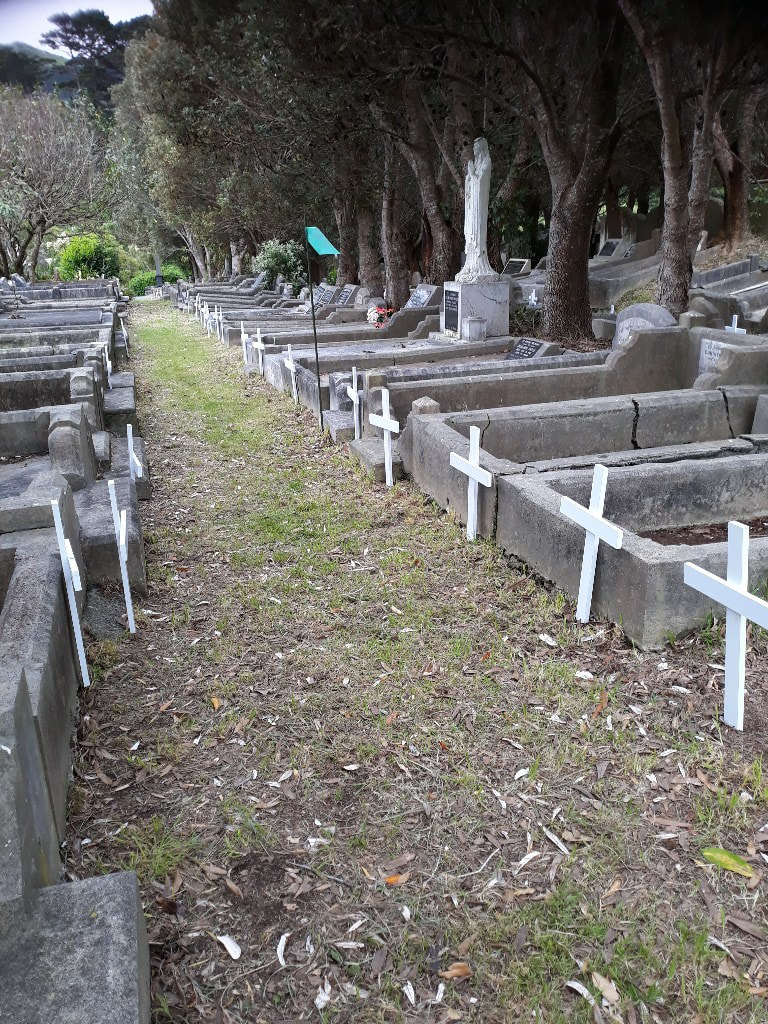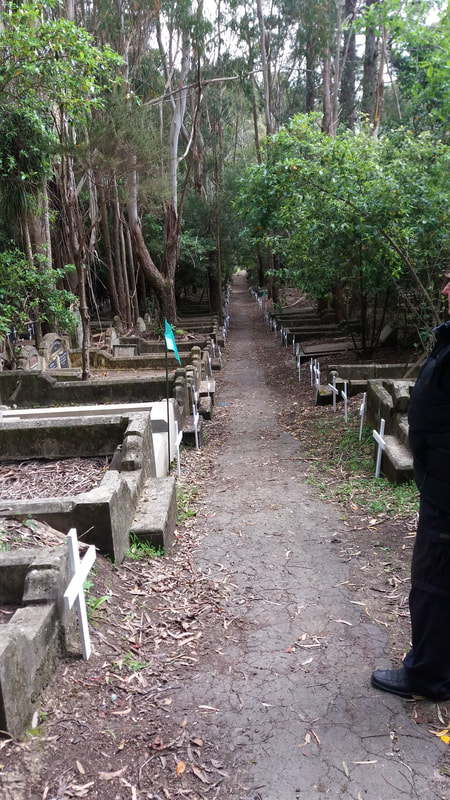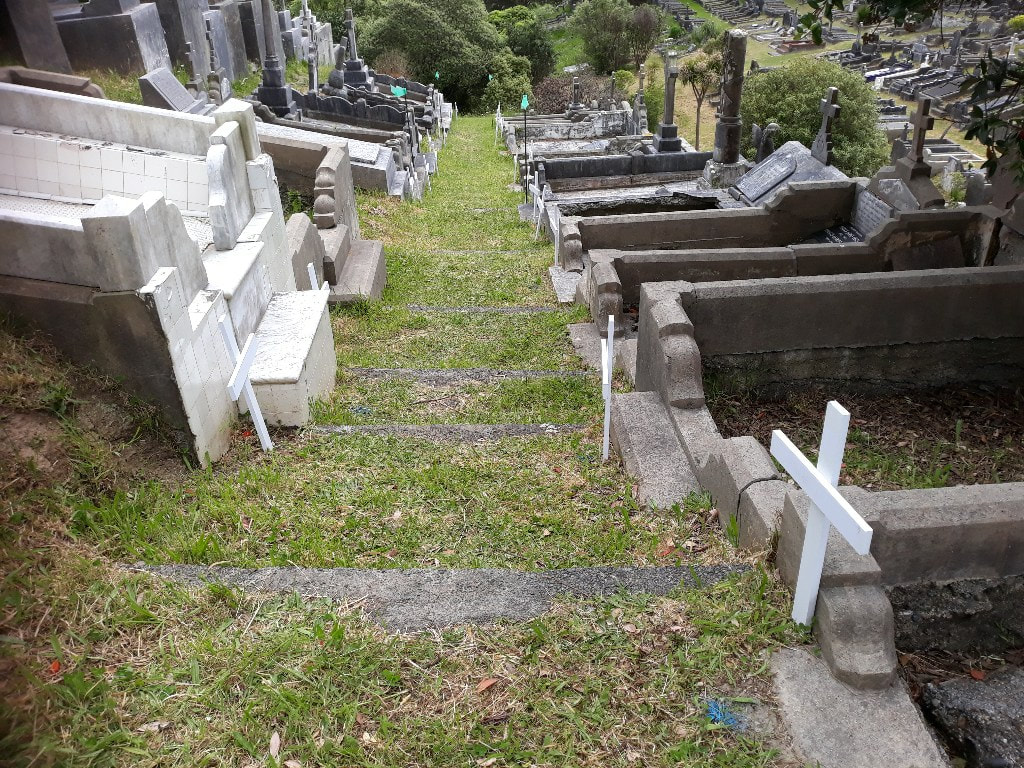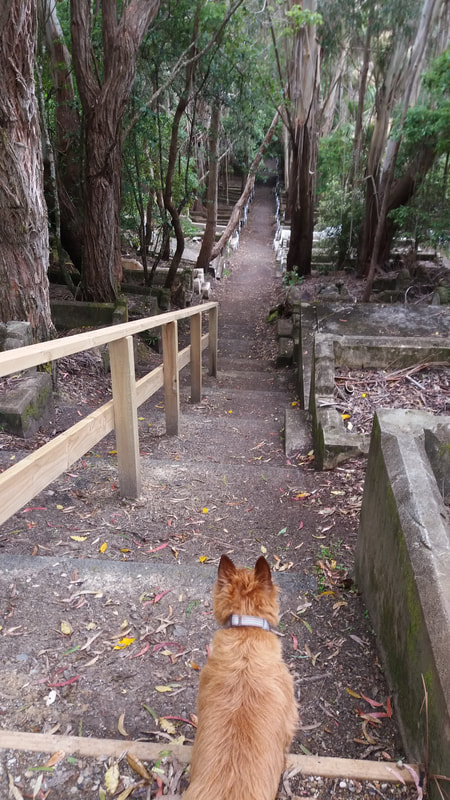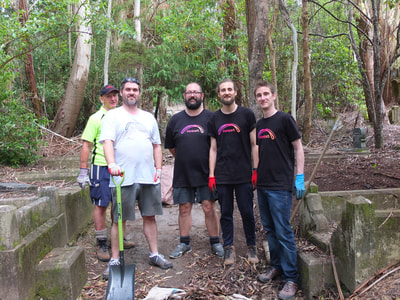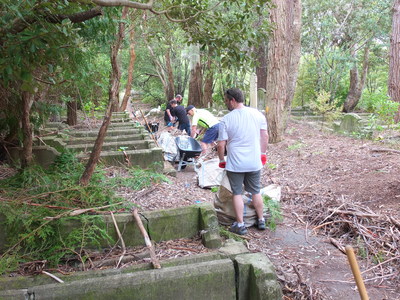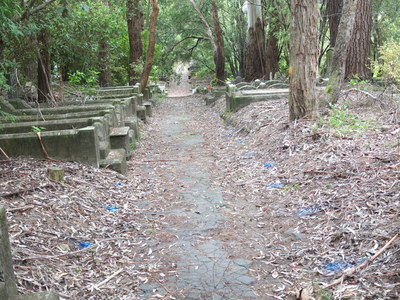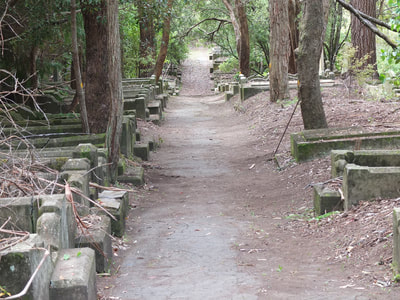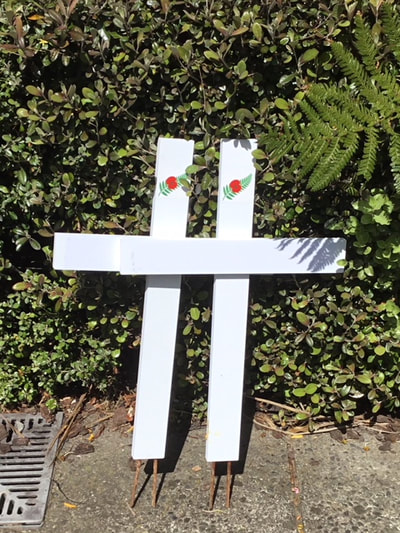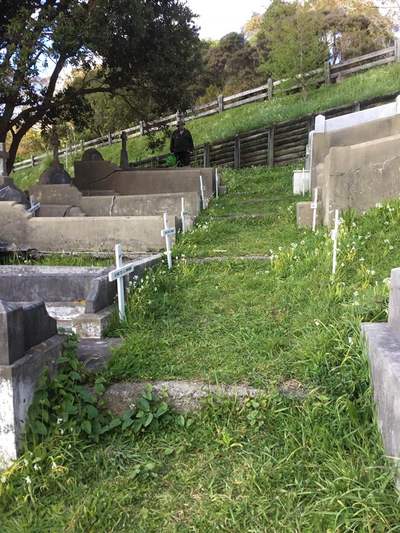DONE AND DUSTED
With a lot of last-minute effort and hard work by many volunteers we were all sorted and ready to go on Sunday 18 November 2018. The weather gods smiled upon us, as always, though we retreated to the Main Chapel for the speeches and presentation as the wind was gusty and noisy. The Mayor spoke about the epidemic in Wellington and how the Mayor of the time, John (later Sir John) Luke led the responses. He acknowledged current Councillor Nicola Young who has been one of our supporters throughout and is the granddaughter of Sir John. Hon Grant Robertson, our local MP (as well as Minister of Finance and Associate Minister of Culture and Heritage) reminded us that early Labour leaders were active in the responses to the epidemic in Wellington, and that the leader of the Labour members in the House and the first leader of the parliamentary wing of the New Zealand Labour Party, Alfred Hindmarsh, MP, was amongst those who died.
About 80 people were in attendance and they remained, along with the Mayor and Hon Grant Robertson to listen to Professor Geoffrey Rice share his knowledge and understanding of the epidemic and explain why the death rate in Wellington was so high, particularly when compared to Christchurch. As always, Professor Rice was an engaging and hugely informative speaker, and his continuing support for this project cannot be underestimated.
By the time the speeches were done, the weather had improved further and remained perfect for the programme of tours throughout the afternoon.
The Mortuary Chapel had been well set up as an information resource centre and was well patronized by those seeking information.
Once our event had concluded, the weather deteriorated and remained bad throughout the following week. However, at 6.00am on Sunday 25th, the rain stopped, the wind dropped, and the sun came out to bring warm, calm and sunny conditions for our second day of tours. As we set up in the Mortuary Chapel just before 11.00am we were pleased to find people already waiting to go on a tour, and there was a steady trickle of people turning up to do tours throughout the day.
We were all packed up before 4.00pm, and 1.5 hours later the rain started again. How lucky were we!
WHAT NOW
The project has now run it’s full 2-year course and done what it set out to do – raise the collective memory, improve access to parts of the cemetery, and raise awareness of the heritage values of the cemetery. There will however be some follow up discussions with different parties, about such matters as: forming a Friends of Karori Cemetery group; persuading the City Council cemetery management team to develop more understanding of the heritage values of the cemetery and how these can work alongside the ongoing operational demands of the cemetery; and to get some action on signage and wayfinding around the cemetery, including permission to install the interpretation panels in the influenza burial areas which were part of the original project plan but had to be deferred.
Every day during November and December 2018 a list of the names of people who died 100 years ago on that day was published on the project’s Facebook page.
WEBSITE
This website costs nothing (Thanks Weebly) and can stay out there in the technological cloud for as long as we want. Some of the team are continuing to upload photos and an occasional story. The email link for messages will remain live so if you want to get in touch any time, please do so.
WHITE CROSSES
The installation of white crosses in the three main burial areas was a triumph, both in its execution and its impact. The logistics of obtaining the crosses, decommissioning them by removing the name labels, and then installing one on each identified plot added a layer of complexity to planning for the days immediately prior to the 18th, but with lots of willing helpers the job was completed in far less time than anticipated. You may have seen some photos of the final installations on Facebook and some have been uploaded below. The crosses have certainly piqued the interest of passersby, and considerable comment. I’m particularly pleased to advise that we have now been given permission to leave them in situ, and to install some temporary information panels explaining what they mean. The Mortuary Chapel is also going to be open during the working day, so passersby can call in and look at the static displays we developed.
STATISTICS
One of our stalwart volunteers, Ann Hodson, has had a long career in the voluntary sector and at her initiative the Volunteer Centre (Wellington) researched the role of volunteers during the epidemic, and published a very creditable booklet which was launched by the Mayor and Professor Geoffrey Rice on 21 November. Some of our volunteers contributed items on their motivation for volunteering for this project, and what they got out of it.
The Sisters of Compassion, an order of Catholic nuns who have been doing fabulous community service projects around Wellington for more than 125 years also mounted an exhibition at the Suzanne Aubert Heritage Centre at their HQ in Island Bay. Many of the nuns provided nursing care during the epidemic. Sister Natalie O’Meara, one of their number, who oversaw the nursery at the Home during the epidemic was the only one of the Order to die. Read about her here.
PARTICIPATION BY FAMILIES
Several families gathered to remember and commemorate their relative(s) who died of influenza during the epidemic. Many more contributed information to the stories which have been uploaded. One couple came from Australia to participate. A new plinth and plaque have recently been installed in Public2 on a previously unmarked plot, and a new headstone with photographs in the Catholic section..
VOLUNTEERING
This project has been volunteer based and all the work and contributions made to it have been on a voluntary basis. Many people have been able to do hands-on work during working bees; many have been able to come along to seminars and/or talks, and there has been a smaller group who have dedicated many hours to genealogy research, editing, website management, administration, and preparing items for publications. Some have been supporting us in spirit, keeping in touch through newsletters and other communications, such as Facebook. To everyone who has supported us in any way, heartfelt thanks are extended - you have all been crucial to the delivery of the project and all your support is genuinely appreciated.
With a lot of last-minute effort and hard work by many volunteers we were all sorted and ready to go on Sunday 18 November 2018. The weather gods smiled upon us, as always, though we retreated to the Main Chapel for the speeches and presentation as the wind was gusty and noisy. The Mayor spoke about the epidemic in Wellington and how the Mayor of the time, John (later Sir John) Luke led the responses. He acknowledged current Councillor Nicola Young who has been one of our supporters throughout and is the granddaughter of Sir John. Hon Grant Robertson, our local MP (as well as Minister of Finance and Associate Minister of Culture and Heritage) reminded us that early Labour leaders were active in the responses to the epidemic in Wellington, and that the leader of the Labour members in the House and the first leader of the parliamentary wing of the New Zealand Labour Party, Alfred Hindmarsh, MP, was amongst those who died.
About 80 people were in attendance and they remained, along with the Mayor and Hon Grant Robertson to listen to Professor Geoffrey Rice share his knowledge and understanding of the epidemic and explain why the death rate in Wellington was so high, particularly when compared to Christchurch. As always, Professor Rice was an engaging and hugely informative speaker, and his continuing support for this project cannot be underestimated.
By the time the speeches were done, the weather had improved further and remained perfect for the programme of tours throughout the afternoon.
The Mortuary Chapel had been well set up as an information resource centre and was well patronized by those seeking information.
Once our event had concluded, the weather deteriorated and remained bad throughout the following week. However, at 6.00am on Sunday 25th, the rain stopped, the wind dropped, and the sun came out to bring warm, calm and sunny conditions for our second day of tours. As we set up in the Mortuary Chapel just before 11.00am we were pleased to find people already waiting to go on a tour, and there was a steady trickle of people turning up to do tours throughout the day.
We were all packed up before 4.00pm, and 1.5 hours later the rain started again. How lucky were we!
WHAT NOW
The project has now run it’s full 2-year course and done what it set out to do – raise the collective memory, improve access to parts of the cemetery, and raise awareness of the heritage values of the cemetery. There will however be some follow up discussions with different parties, about such matters as: forming a Friends of Karori Cemetery group; persuading the City Council cemetery management team to develop more understanding of the heritage values of the cemetery and how these can work alongside the ongoing operational demands of the cemetery; and to get some action on signage and wayfinding around the cemetery, including permission to install the interpretation panels in the influenza burial areas which were part of the original project plan but had to be deferred.
Every day during November and December 2018 a list of the names of people who died 100 years ago on that day was published on the project’s Facebook page.
WEBSITE
This website costs nothing (Thanks Weebly) and can stay out there in the technological cloud for as long as we want. Some of the team are continuing to upload photos and an occasional story. The email link for messages will remain live so if you want to get in touch any time, please do so.
WHITE CROSSES
The installation of white crosses in the three main burial areas was a triumph, both in its execution and its impact. The logistics of obtaining the crosses, decommissioning them by removing the name labels, and then installing one on each identified plot added a layer of complexity to planning for the days immediately prior to the 18th, but with lots of willing helpers the job was completed in far less time than anticipated. You may have seen some photos of the final installations on Facebook and some have been uploaded below. The crosses have certainly piqued the interest of passersby, and considerable comment. I’m particularly pleased to advise that we have now been given permission to leave them in situ, and to install some temporary information panels explaining what they mean. The Mortuary Chapel is also going to be open during the working day, so passersby can call in and look at the static displays we developed.
STATISTICS
- At least 130 people went on tours;
- 10 working bees, and 4 seminars/volunteer meetings were held between November 2016 and November 2018;
- 226 people “Liked” the project Facebook page;
- Between 1 Nov and 29 Nov 2018, the website had 2,258 unique visitors, peaking at 431 visitors on 16 November, who viewed 993 pages;
- There were 7,222 page views during the same period;
- During the preceding months the number of unique visitors ranged between 25 and 35 per day;
- Between August and 18 November 2018 there were presentations about the project to 10 different groups;
- The project was featured in, and/or provided information for at least 8 newspaper items throughout the country and generated some air time on commercial and public radio.
- We featured in one prime time TV news item in November, and had previous exposure 12 months or so prior;
- There are more than 180 stories on the website;
- Approx. 450 graves/plots were worked on and tidied to a greater or lesser extent during the project, some more than once;
- Two corporate groups provided invaluable assistance with the major cleanup area known as Gum Gully
One of our stalwart volunteers, Ann Hodson, has had a long career in the voluntary sector and at her initiative the Volunteer Centre (Wellington) researched the role of volunteers during the epidemic, and published a very creditable booklet which was launched by the Mayor and Professor Geoffrey Rice on 21 November. Some of our volunteers contributed items on their motivation for volunteering for this project, and what they got out of it.
The Sisters of Compassion, an order of Catholic nuns who have been doing fabulous community service projects around Wellington for more than 125 years also mounted an exhibition at the Suzanne Aubert Heritage Centre at their HQ in Island Bay. Many of the nuns provided nursing care during the epidemic. Sister Natalie O’Meara, one of their number, who oversaw the nursery at the Home during the epidemic was the only one of the Order to die. Read about her here.
PARTICIPATION BY FAMILIES
Several families gathered to remember and commemorate their relative(s) who died of influenza during the epidemic. Many more contributed information to the stories which have been uploaded. One couple came from Australia to participate. A new plinth and plaque have recently been installed in Public2 on a previously unmarked plot, and a new headstone with photographs in the Catholic section..
VOLUNTEERING
This project has been volunteer based and all the work and contributions made to it have been on a voluntary basis. Many people have been able to do hands-on work during working bees; many have been able to come along to seminars and/or talks, and there has been a smaller group who have dedicated many hours to genealogy research, editing, website management, administration, and preparing items for publications. Some have been supporting us in spirit, keeping in touch through newsletters and other communications, such as Facebook. To everyone who has supported us in any way, heartfelt thanks are extended - you have all been crucial to the delivery of the project and all your support is genuinely appreciated.
SUNDAY 25 November - come along between 11.00am and 4.00pm to view the display in the Mortuary Chapel (refer map) and to join the tours of the areas where people who died of influenza 100 years ago were buried. Tours are at 11.30am, 12.30pm, 1.30pm, and 2.30pm. The weather forecast is OK but come prepared for a sprinkle of rain (just in case!). Full details about the programme are here.
A commemoration programme to learn about those who died in Wellington during the epidemic is being held on
Sunday 18 & Sunday 25 November 2018 at Karori Cemetery.
From 11.00am until 4.00pm both days there will be information available at the Historic (Mortuary) Chapel about the epidemic and about those who died. There will be guides in each of the five areas where people were buried – Anglican, Catholic, Public, Jewish and Services – to talk about the people who were buried, and the work the project has undertaken to clean and tidy their graves. These are free events, open to the general public.
Detailed programme and other information about parking, meeting place for tours etc. is here
Follow these links for Programme, parking information, and maps
Sunday 18 & Sunday 25 November 2018 at Karori Cemetery.
From 11.00am until 4.00pm both days there will be information available at the Historic (Mortuary) Chapel about the epidemic and about those who died. There will be guides in each of the five areas where people were buried – Anglican, Catholic, Public, Jewish and Services – to talk about the people who were buried, and the work the project has undertaken to clean and tidy their graves. These are free events, open to the general public.
Detailed programme and other information about parking, meeting place for tours etc. is here
Follow these links for Programme, parking information, and maps
Last chance to help clean & tidy the graves of people who died of influenza 100 years ago - Working Bee, Sunday 11 November - meet at the Mortuary Chapel by 1.55pm. Tools and equipment provided but bring good gardening gloves, sunblock, drinking water. Good dogs on leads welcome.
If you'd like to know more about soldiers who died of influenza at Trentham Camp in 1918 there's lots of information on www.lynly.gen.nz
- Click on the Upper Hutt Historical projects section (paragraph 4)
- Scroll down to the Upper Hutt Miscellaneous & Historical events section
- Click on Victims Trentham Camp which is in the Influenza section
Thanks Lynly Yates for sharing the information.
- Click on the Upper Hutt Historical projects section (paragraph 4)
- Scroll down to the Upper Hutt Miscellaneous & Historical events section
- Click on Victims Trentham Camp which is in the Influenza section
Thanks Lynly Yates for sharing the information.
On 7 November 1918 the SS Talune berthed in Apia Harbour, Samoa and discharged passengers infected with influenza. Within a few days Samoans started dying, and in a few short weeks more than 8,000 had died (out of a population of 40,000). The consequences for Samoa were far reaching. Watch this compelling and powerful documentary to learn more:
http://www.thecoconet.tv/know-your-roots/pacific-documentaries/1918-samoa-and-the-ship-of-death/
http://www.thecoconet.tv/know-your-roots/pacific-documentaries/1918-samoa-and-the-ship-of-death/
There's a few events & activities about the influenza epidemic during the next few weeks - here's some to note:
A documentary featuring short, personal recollections by elderly New Zealanders about the 1918 influenza epidemic. They recall the symptoms, treatment, and the effect on New Zealand society.
https://www.ngataonga.org.nz/collections/catalogue/catalogue-item?record_id=183933&fbclid=IwAR1bP2PSBwCKhGw9FzyRM03g9JuDgzqGUE6NHlFafL8AqGyn2oi8uew5TdA
Sunday 4 November
8.09am National Radio - an Insight programme about influenza today
2.00pm - 4.00pm Project working bee in the cemetery
Wednesday 7 November 5.00pm. National War Memorial Hall of Memories.
A dance performance by Le Moana commemorating the flu pandemic in the
Pacific. There's limited space for this, and bookings are essential. FREE.
https://www.facebook.com/events/261059364555583/
Friday 9 November - 12:10pm to 1:40pm
Historians Jane Tolerton, Steven Loveridge and Barbara Mulligan will each draw on their unique knowledge of the First World War to present what life was like after the signing of the armistice agreement on 11th November 1918. The armistice ended the fighting on land, sea and air. FREE.
https://natlib.govt.nz/events/life-after-armistice-november-09-2018
Saturday 10 November @ Te Papa 2.00pm – 3.30pm. Remembering Armistice: The Influenza Pandemic – Film and Panel Talk
“Join us for a documentary screening and discussion marking the centenary of the 1918 flu outbreak – an epidemic that devastated New Zealand and Sāmoa.” FREE.
https://www.tepapa.govt.nz/visit/whats-on/events/remembering-armistice-influenza-pandemic-film-and-panel-talk
Sunday 11 November. 1.00pm -2.00pm Public presentation in the Services Section on why and how the dedicated Services section was created, and some of the stories behind the gravestones, including some of the 108 men who died of flu. FREE.
2.00pm-4.00pm Project working bee.
Sunday 11 November - 31 March 2019. Suzanne Aubert Heritage Centre
Our Lady's Home of Compassion, 2 Rhine Street (off Murray St), Island
Bay. This special temporary exhibition commemorates the Influenza Pandemic of 1918 and the response of the Sisters of Compassion nursing in a stricken city. FREE.
https://www.facebook.com/events/563435257432984/
A documentary featuring short, personal recollections by elderly New Zealanders about the 1918 influenza epidemic. They recall the symptoms, treatment, and the effect on New Zealand society.
https://www.ngataonga.org.nz/collections/catalogue/catalogue-item?record_id=183933&fbclid=IwAR1bP2PSBwCKhGw9FzyRM03g9JuDgzqGUE6NHlFafL8AqGyn2oi8uew5TdA
Sunday 4 November
8.09am National Radio - an Insight programme about influenza today
2.00pm - 4.00pm Project working bee in the cemetery
Wednesday 7 November 5.00pm. National War Memorial Hall of Memories.
A dance performance by Le Moana commemorating the flu pandemic in the
Pacific. There's limited space for this, and bookings are essential. FREE.
https://www.facebook.com/events/261059364555583/
Friday 9 November - 12:10pm to 1:40pm
Historians Jane Tolerton, Steven Loveridge and Barbara Mulligan will each draw on their unique knowledge of the First World War to present what life was like after the signing of the armistice agreement on 11th November 1918. The armistice ended the fighting on land, sea and air. FREE.
https://natlib.govt.nz/events/life-after-armistice-november-09-2018
Saturday 10 November @ Te Papa 2.00pm – 3.30pm. Remembering Armistice: The Influenza Pandemic – Film and Panel Talk
“Join us for a documentary screening and discussion marking the centenary of the 1918 flu outbreak – an epidemic that devastated New Zealand and Sāmoa.” FREE.
https://www.tepapa.govt.nz/visit/whats-on/events/remembering-armistice-influenza-pandemic-film-and-panel-talk
Sunday 11 November. 1.00pm -2.00pm Public presentation in the Services Section on why and how the dedicated Services section was created, and some of the stories behind the gravestones, including some of the 108 men who died of flu. FREE.
2.00pm-4.00pm Project working bee.
Sunday 11 November - 31 March 2019. Suzanne Aubert Heritage Centre
Our Lady's Home of Compassion, 2 Rhine Street (off Murray St), Island
Bay. This special temporary exhibition commemorates the Influenza Pandemic of 1918 and the response of the Sisters of Compassion nursing in a stricken city. FREE.
https://www.facebook.com/events/563435257432984/
Wednesday 24 October 2018. These hard working chaps from Contact Energy spent 5 hours yesterday sweeping, raking, lugging and shovelling debris and tree litter from pathways and unmarked plots in the Public2 section of Karori Cemetery on behalf of the 1918 Influenza Project . Thanks Ronald, Ewan, Hadleigh, Benjamin & Dave - you done real good!!!!! Their efforts mean that when the project volunteers gather for their working bees on 4 and 11 November they'll be able to focus on the graves which need further cleaning and tidying, and the pathways will be safer for the general public visiting on the centenary commemoration days on 18 & 25 November.
Sunday 21 October 2018. Our latest newsletter has been released on the Newsletters page.
Sunday 14 October 2018. There's a very good item by Professor Geoffrey Rice in today's Sunday Star Times, page A12. Sums up many of the fascinating aspects of this deadly virus and its effects. You can also read it online if you have the PressReader app or, of course, you can access the digital version of the Sunday Star Times if you have a subscription.
Saturday 13 October 2018. There's a change to the commemoration programme on Sunday 18 November - Professor Rice will set the scene about the influenza epidemic in Wellington in his presentation at
11.30am.
Venue - the Main Chapel, Rosehaugh Avenue.
11.30am.
Venue - the Main Chapel, Rosehaugh Avenue.
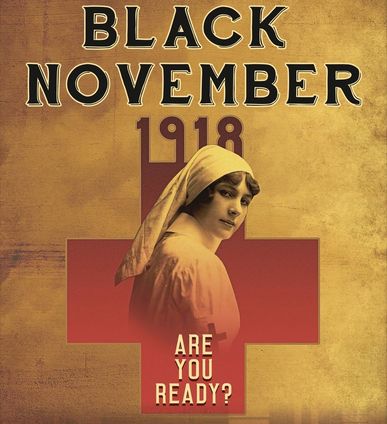
(This production has now ended.)
There are still tickets available for a production by 3rd year students at VUW's School of English, Film, Theatre and Media Studies directed by Kerryn Palmer.
Details about the production, and a link to buy tickets, are on their website:
https://www.victoria.ac.nz/seftms/about/events/black-november-1918
Several of our volunteers have already been and recommend it. It runs every evening at 7.30pm until next Wednesday 17 October (except Sunday).
There are still tickets available for a production by 3rd year students at VUW's School of English, Film, Theatre and Media Studies directed by Kerryn Palmer.
Details about the production, and a link to buy tickets, are on their website:
https://www.victoria.ac.nz/seftms/about/events/black-november-1918
Several of our volunteers have already been and recommend it. It runs every evening at 7.30pm until next Wednesday 17 October (except Sunday).
We're going to be able to identify each plot in which someone who died of influenza was buried at Karori Cemetery in three of the five areas of interest for the commemoration days, by installing white crosses used in an ANZAC Day display at the Botanic Gardens earlier this year. They will create a sombre and poignant representation of the death rate in Wellington during November and December 1918. We won't put crosses on the plots occupied by men from India, assuming they were likely not to be Christian, nor of course in the Jewish section. The headstones in the Services section are grouped closely together and the dates are visible, so there's also no need to add further identification. We'll leave the poppy/fern symbol on crosses marking servicemen buried in the Anglican, Public and Catholic sections.
If you can help us on 4 and 11 November to clean and clear the areas where we'll be installing the crosses and taking people on guided tours on 18 & 25 November contact us on [email protected]
If you can help us on 4 and 11 November to clean and clear the areas where we'll be installing the crosses and taking people on guided tours on 18 & 25 November contact us on [email protected]
